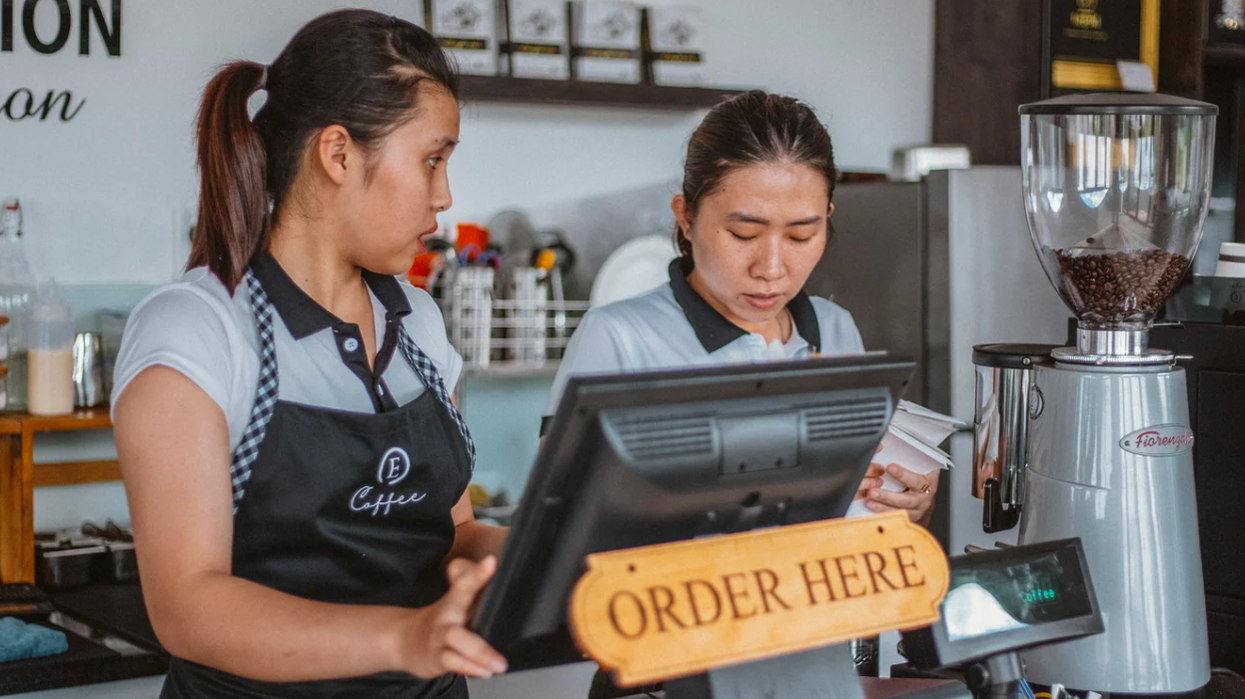Calling Everytable a restaurant feels like stretching the definition of the term. Not only do you serve yourself at the new takeout chain, you also warm up your own food in the store’s microwave if you choose to eat it there. There are a few orange chairs and tables at the location in South LA—their first one—just a couple blocks away from the University of Southern California’s campus, and a bowl of tamales de chile rojo or Jamaican jerk chicken and coconut rice will cost you less than $5.
A few blocks north, in Everytable’s third and newest location at the recently renovated open-air mall in downtown Los Angeles called The Bloc, there is no seating, and the same exact bowl—prepared in an identical kitchen by the same chef—is priced at just under $9. The pricing model of each EveryTable location is loosely determined by the per capita income of the neighborhood it’s situated in (or, at least by the per capita income of its customer base). This sliding scale is intended to make this kind of healthy food available for anyone, living in any neighborhood, placing Everytable on the spectrum of socially conscious enterprises such as Roy Choi and Daniel Patterson’s LocoL and Greg Boyle’s Homeboy Industries that are similarly trying to bring cheap, healthy food options to underserved areas of Los Angeles.
“Our strategy in general has been to make healthy food more affordable for everybody,” says Everytable co-founder and CEO Sam Polk, seated nearby The Bloc location at an “influencer“ dinner attended by notable people such as Hunger Action LA’s Frank Tamborello and the LA Food Policy Council’s Clare Fox. “In South LA that means $4 or $5 a meal. But here, most fast-casual places are twelve to thirteen bucks. So even though it's eight bucks, it's still better than most.“
Here, in Downtown LA, the restaurant outpost hopes to serve an affluent daytime population of middle-to-upper-class office workers. In South LA, the Everytable location feeds a neighborhood where the median income rests slightly above $18,000 and is populated by struggling college students and working class families. The higher meal prices in the downtown location essentially help offset the lower prices of the one in University Park. “One thing that not a lot of people realize is that there are huge hunger issues amongst college students, including USC, which has a lot of kids from the surrounding communities,“ says Polk.
If you recognize Polk’s name, it’s because a few years ago he published a remorseful op-ed in The New York Times coming out as a former Wall Streeter-turned-do-gooder. “There were plenty of injustices out there—rampant poverty, swelling prison populations, a sexual assault epidemic, an obesity crisis. Not only was I not helping to fix any problems in the world, but I was profiting from them,“ he wrote. In 2010, he turned down a hefty bonus, abandoned his post as a hedge fund trader at Citibank, and went on to start a nonprofit called Groceryships.
The idea for Everytable emerged from his work on Groceryships, an organization that provides families in marginalized communities with “scholarships“ for groceries—not just for buying fresh produce, but for weekly cooking and nutrition classes.
He founded the company in 2013. Soon after, David Foster, a former private equity professional, joined him. “There was always that feeling inside when I was working in finance that there was some other problem out there that was probably a little bit bigger than the problem that we were working on or solving in private equity,“ says Foster. “I thought that there was a better use of my time, potentially.“
The problem both Polk and Foster wanted to focus on was food deserts—a term used to describe neighborhoods that struggle with access to fresh produce and healthy food and are saturated with fast-food establishments. In the past two decades, food access has become a major issue for policymakers, particularly those in LA. The 1992 Los Angeles riots threw into stark relief the economic inequalities that fractured the city map and marginalized neighborhoods like South L.A., drawing the attention of the broader public to the severe negligence of policymakers in L.A.’s poorer neighborhoods.
[quote position="full" is_quote="true"]U.S. capitalism is sort of like the Princeton lacrosse team, where it's very competitive and meritocratic among a certain subset of people.[/quote]
It spurred an effort called ReBuild LA, which proposed opening 32 new grocery stores in the city’s southern neighborhoods. But many of Rebuild LA’s lofty plans never came to fruition, due to lack of funds and bureaucratic inefficiencies. According to the Los Angeles Food Policy Council, only two of the proposed groceries had opened by 2002. The Council also noted that “community-grounded research revealed that not all grocery stores are created equal. South LA stores had a statistically significant higher concentration of expired foods and fewer healthy options.“ Additionally, residents of South LA were subjected to what’s called a “poverty tax,“ as the Council reported that “healthy food options in South LA stores were also priced higher.“
In 2008, community activists in South LA began referring to its health and food crisis as “food apartheid“ and introduced a neighborhood ban on fast-food establishments. “You try to get a salad within 20 minutes of our location; it's virtually impossible,“ Marqueece Harris-Dawson, then the executive director of a local nonprofit called Community Coalition (and now a city council member) told The Washington Post. In 2011, the city ordinance passed. Although many have been quick to dismiss the ban—already declaring it another policy failure because it didn’t produce immediate results—there are those who believe it hasn’t been given an opportunity to succeed, including experts such as LaVonna Blair Lewis, a professor of public policy at USC, whose research and work has focused on food and health, specifically in LA. “I think the moratorium has been effective in the sense that it has prevented new stand-alone fast food restaurants,“ she says. Fast food restaurants, however, have still been permitted to open new establishments in strip malls. “One of the problems for South LA is that they don't have plots of land that are big enough for significant development.“ That means there’s not much space for big community gardens, or for new healthy, stand-alone restaurants or grocery stores to open up.
Lewis believes there needs to be “multiple stakeholders“ at the table—including those from the private sector, like Sam Polk and David Foster, as well as those in public policy and community activism. In fact, when he was first conceiving Everytable, Polk reached out to Lewis to talk about her research on food inequality in South LA. On multiple occasions, he’s also spoken to her students, some of whom, she says, are skeptical of Polk’s role as a businessman. “I’ve had people get really excited and say, ‘This is wonderful,’ and then people who take a more wait-and-see attitude,“ says Lewis. “It has more to do with their thoughts about the private sector than Sam and what he was doing in particular.“
That public policy students are dubious of capitalist solutions to the very problems that capitalism produced is not surprising. Polk is a champion of what he calls “inclusive capitalism“ and puts his faith in the “dynamism“ of markets. “U.S. capitalism is sort of like the Princeton lacrosse team, where it's very competitive and meritocratic among a certain subset of people,” he says. “But it's not a world of equality of opportunity, and it's very clear that a kid born in Watts is going to have a harder time making a real living than a kid born in Santa Monica.“
He’s certainly not the first to open a much-hyped, socially conscious restaurant business in Los Angeles—last year, celebrity chefs Roy Choi and Daniel Patterson opened LocoL in Watts to much fanfare from the press and community (except from The New York Times’ famously curmudgeonly food reviewer Pete Wells). It’s a restaurant that looks like a fast food joint, but fortifies its food with healthy supplements—the chain’s “cheeseburger” patty, for example, isn’t 100 percent beef, but contains grains and tofu. Everything on the menu is less than $10, and its employees are hired from the local neighborhood.
[quote position="right" is_quote="true"]Where, in some instances, you might see a poverty tax, people with low incomes would be asked to pay more, Sam's kind of flipped it.[/quote]
Everytable’s model follows a similar pattern. The restaurants look like what start-ups would look like if start-ups had storefronts. The aesthetic is characterized by sleek lines and genial colors—a cheerful teal, an earthy orange, and mild yellow. Inside, bowls are stacked inside the refrigerator, lined up with impressive precision, organized by color—teal for cold bowls, orange for hot ones, and yellow for children’s meals (which sell for less than $3). This pared-down design approach means that the restaurants are relatively inexpensive to open and require only one or two employees working at a time.
Many of their employees are Gorceryships alumni, hired locally, and at the end of the day, Everytable’s leftovers are shipped off to local food banks. Even the menu was developed to cater to Los Angeles tastes. “We hired one of the best chefs in the country, former head chef of Le Cirque, and went through this rigorous process,” says Polk. “(Craig Hopson) came up with all these dishes that had to meet all our criteria in terms of health and taste, but also had to be really attractive to a lot of the moms that we were serving in Groceryships. So we brought them in on the process.” The mothers even helped cocreate a dish—the pozole rojo, a thick red pork stew made with green cabbage, jalapeno, radish, tomatoes, and chipotle.
“A lot of the concerns about people not wanting to eat healthy really goes back to their ability to pay for the higher prices that those foods might generate,” says Lewis. People’s tastes develop based on what’s available to them, and healthy food was—and is—just too expensive for much of South LA “Where, in some instances, you might see a poverty tax, people with low incomes would be asked to pay more, Sam's kind of flipped it,” says Lewis.
“It's intended to be a frictionless effort,” says Foster. “You're not having to give something of yourself to make something available to others.” This ethos bears a similarity to that of TOMS Shoes one-for-one model, and not by accident—they were able to open the first store with some capital from the TOMS Social Entrepreneurship Fund. They’ve already opened three stores in the past few months and are hoping to add dozens more in the next year. “The first thing is to saturate Los Angeles,” says Polk.
Foster and Polk are banking on a post-Donald Trump world, in which the social justice sensibilities of the everyday consumer have been awakened. They imagine that most people—even affluent folks in Santa Monica or Beverly Hills—won’t have a problem paying premium if that means someone less privileged will have access to the same product at an affordable price. “Some walk in, and they don't even know about the mission, but they see a great meal at a crazy price that is super convenient, and that's a win whether you're paying $7.95 downtown or $3.95 at the South LA store,“ says Foster. The Yelp reviews, however, reveal that most people are well aware of the company’s purpose-driven marketing. “A true ‘Blue Apron Killer,’ along with being incredibly affordable, healthy and tasty,” wrote one customer. “This is such a neat concept and much needed in this neighborhood full of fast/unhealthy food,” wrote another.
There are those customers, Foster said, who might be willing to go an extra mile to save a few extra bucks, too. “One of my friends is actually one of these people—who is nearby downtown, but he’s like, ‘I'm going to keep driving to the (USC) store because it’s a lot cheaper,’” says Foster. “What I say to that is, ‘That's great, man.’”






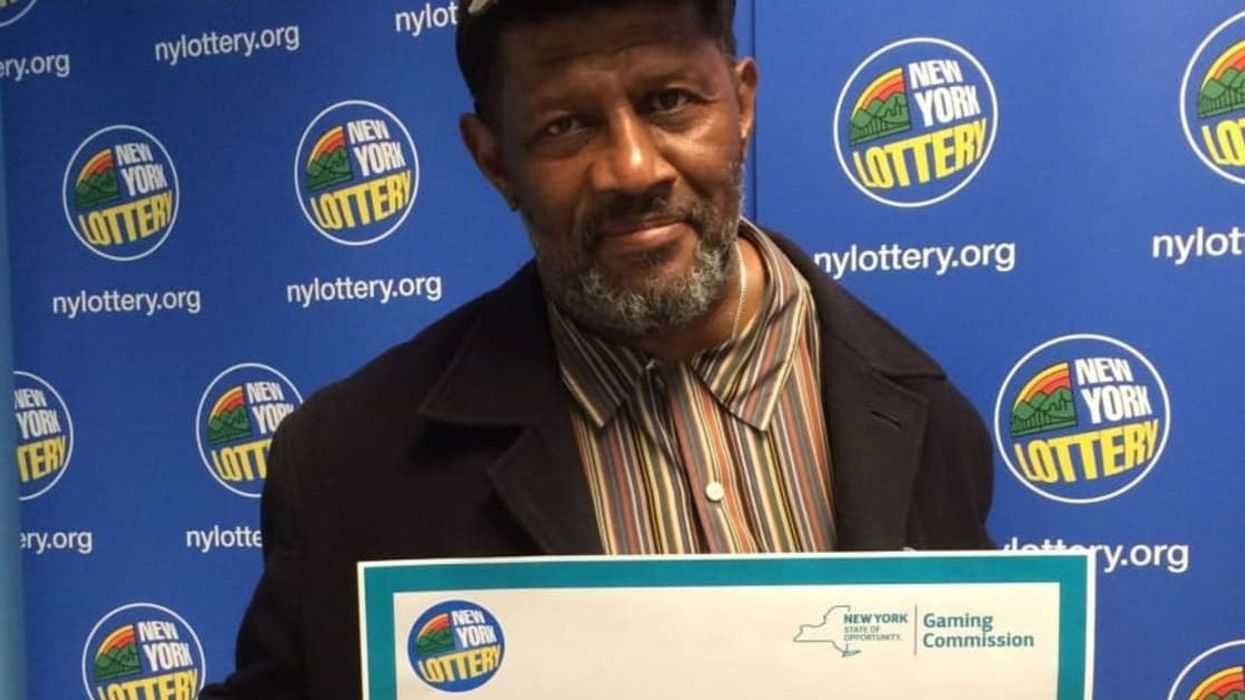











 Screenshots of the man talking to the camera and with his momTikTok |
Screenshots of the man talking to the camera and with his momTikTok | 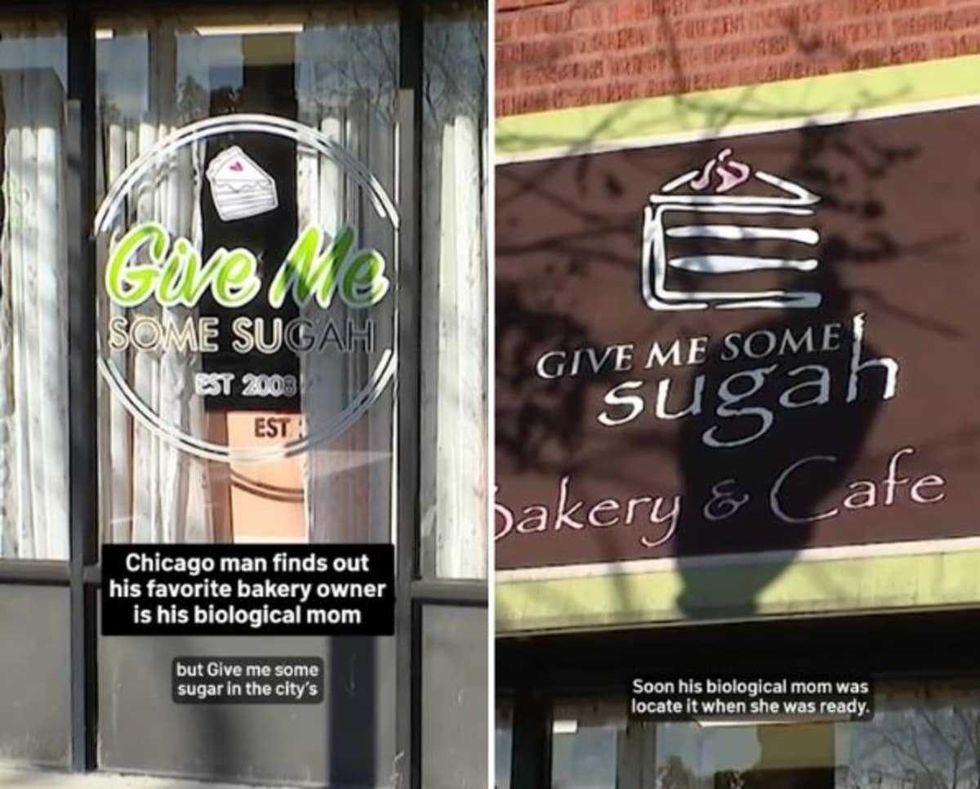 Screenshots of the bakery Image Source: TikTok |
Screenshots of the bakery Image Source: TikTok | 
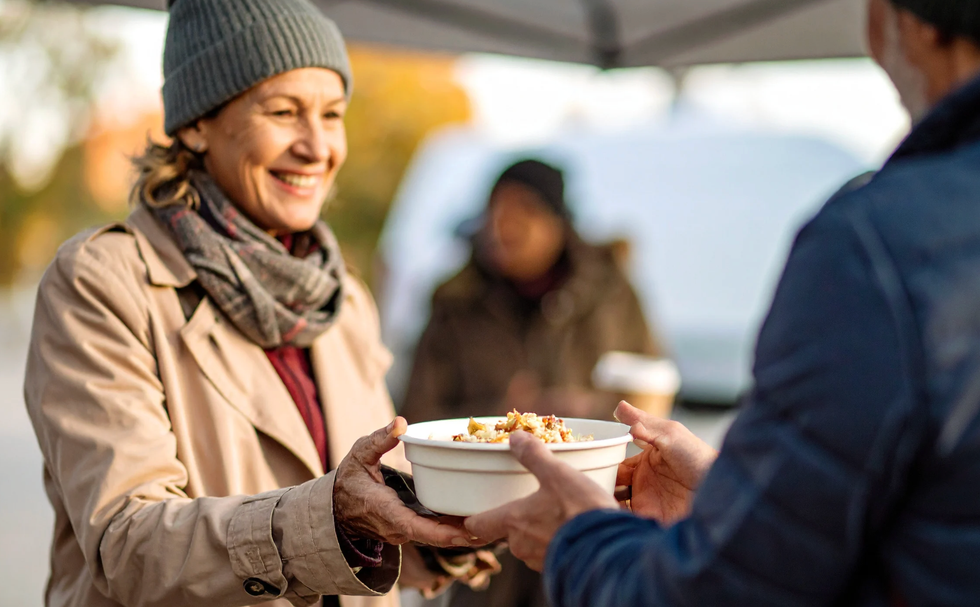 A woman hands out food to a homeless personCanva
A woman hands out food to a homeless personCanva A female artist in her studioCanva
A female artist in her studioCanva A woman smiling in front of her computerCanva
A woman smiling in front of her computerCanva 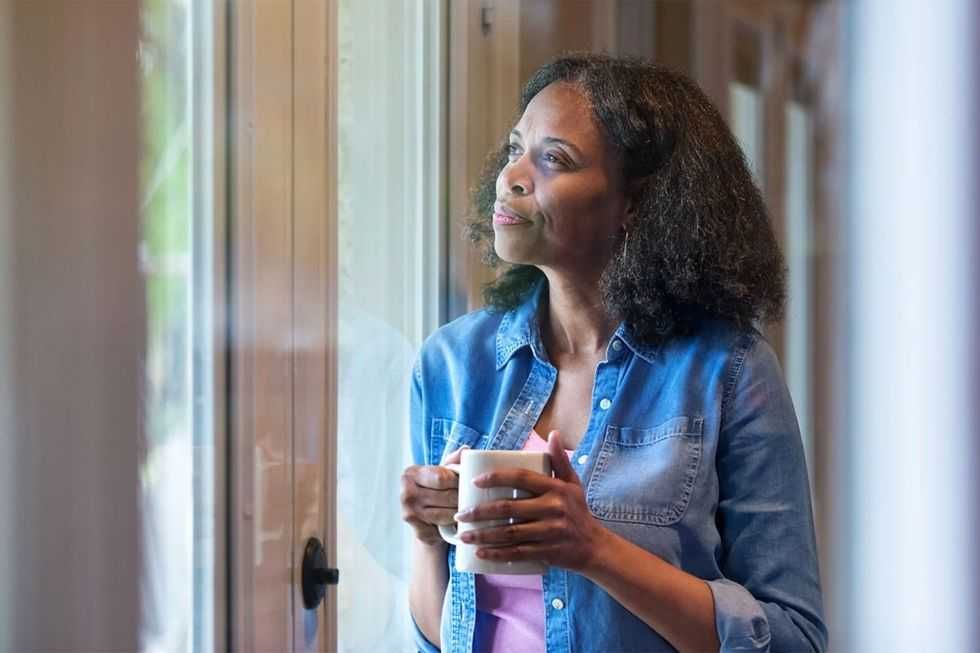 A woman holds a cup of coffee while looking outside her windowCanva
A woman holds a cup of coffee while looking outside her windowCanva  A woman flexes her bicepCanva
A woman flexes her bicepCanva  A woman cooking in her kitchenCanva
A woman cooking in her kitchenCanva  Two women console each otherCanva
Two women console each otherCanva  Two women talking to each otherCanva
Two women talking to each otherCanva  Two people having a lively conversationCanva
Two people having a lively conversationCanva  Two women embrace in a hugCanva
Two women embrace in a hugCanva 
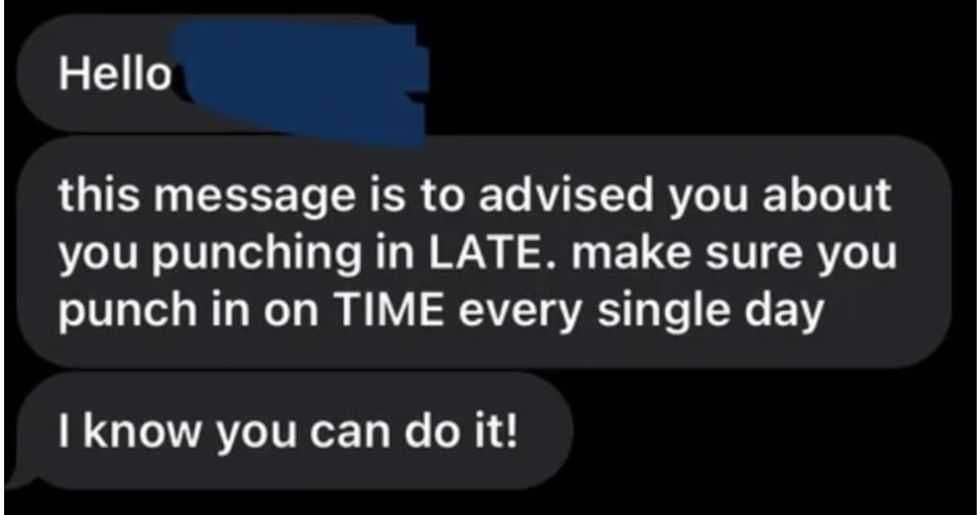 A reddit commentReddit |
A reddit commentReddit |  A Reddit commentReddit |
A Reddit commentReddit | 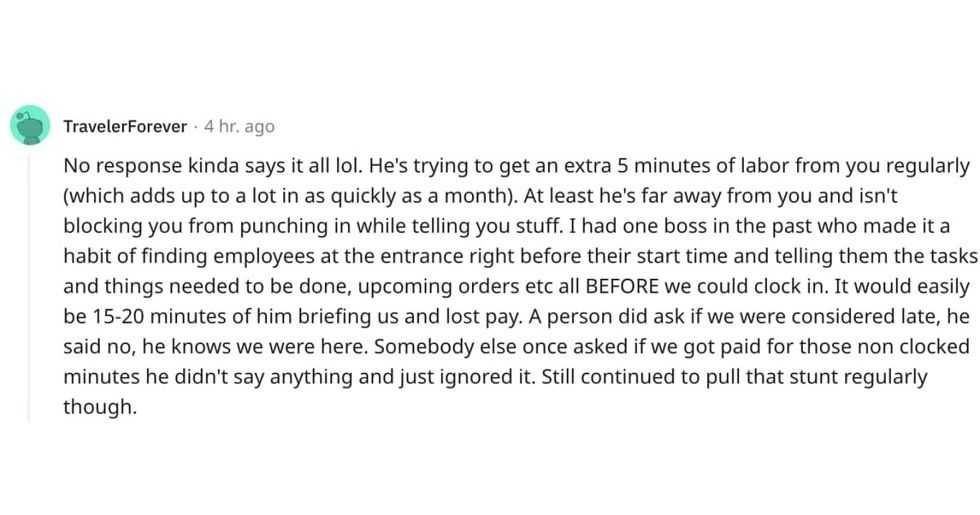 A Reddit commentReddit |
A Reddit commentReddit |  Stressed-out employee stares at their computerCanva
Stressed-out employee stares at their computerCanva
 Who knows what adventures the bottle had before being discovered.
Who knows what adventures the bottle had before being discovered. 
 Gif of young girl looking at someone suspiciously via
Gif of young girl looking at someone suspiciously via 